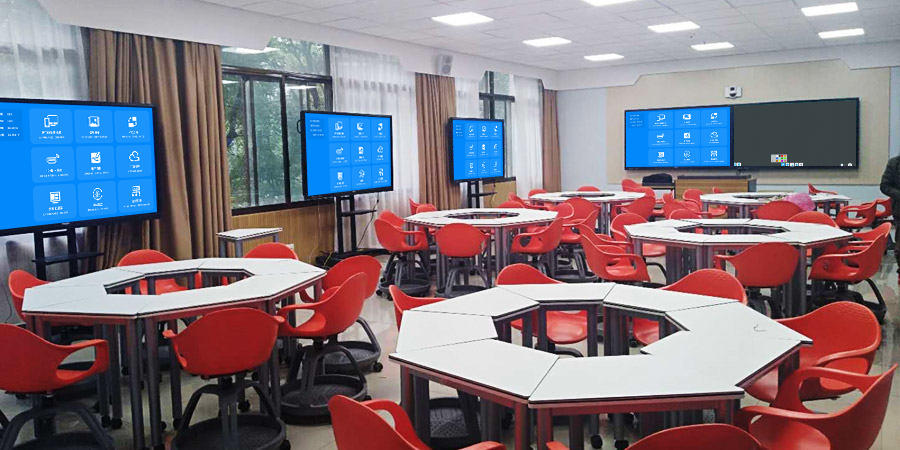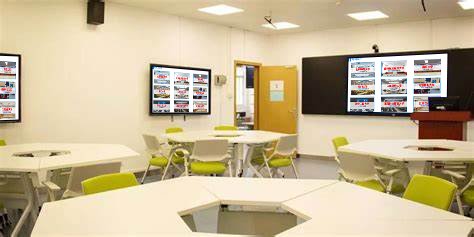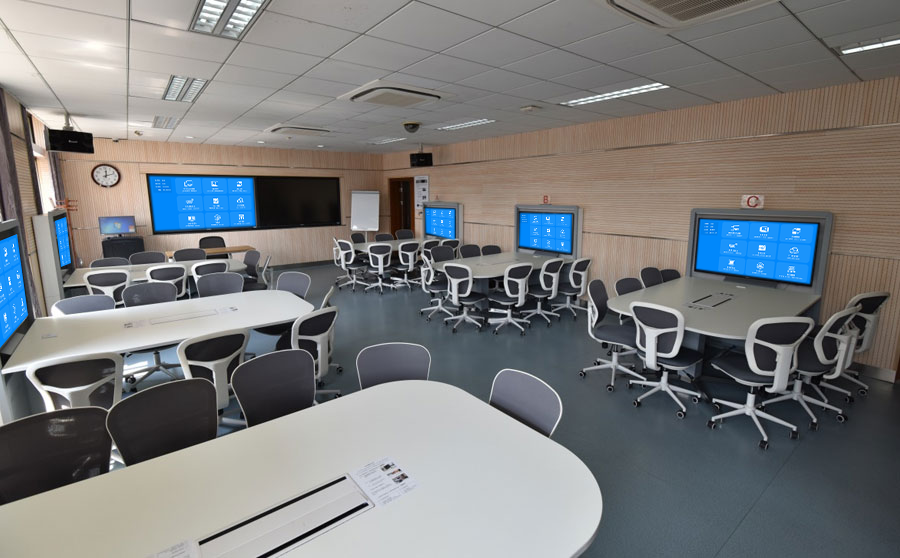Interactive Classrooms: Fully Empowering Teaching Interaction
In the ongoing advancement of educational informatization, interactive classrooms are reshaping teaching models with a fresh approach. They’re moving classrooms beyond dull, one-way information transfer, truly enabling deep interaction and communication between teachers and students, and among students themselves, injecting continuous vitality into teaching.
I. Convenient Multi-Device Interconnection: The First Step Towards Interaction
Seamless Cross-Platform Connectivity: Interactive classrooms support quick access for various devices, including phones (iOS, Android), computers (Windows, macOS), and tablets. In class, whether a teacher is using a Windows computer to display meticulously prepared courseware or an iPad to present engaging educational videos, they can one-click cast it to the classroom’s large screen for clear content presentation. Students can also use their devices to instantly cast and share group discussion results, personal assignments, and more, breaking down device barriers and ensuring smooth information flow.
Ultra-Fast Wireless Screen Mirroring Experience: Leveraging advanced wireless screen mirroring technology, classrooms are freed from the束缚 of cables. Simple operations like entering a casting code or scanning a QR code enable device connection to the classroom display within 3 seconds. When a sudden idea strikes in class, students can quickly cast their creative thoughts from their phones to the big screen to share with the entire class, ensuring no moment of brainstorming is missed and greatly enhancing the timeliness of classroom interaction.
II. Rich Interactive Features: Igniting Classroom Vitality
Real-Time Annotation and Highlighting: The interactive classroom’s electronic whiteboard boasts powerful functions. When explaining courseware, images, or videos, teachers can directly annotate, highlight key points, and write explanations on the mirrored content in real-time. These actions are instantly synchronized to students’ device screens. Students can also take notes or pose questions on the mirrored content on their own devices. Teachers can view these in real-time and provide targeted answers, making the teaching and learning interaction more focused and knowledge transfer more efficient.
Interactive Q&A and Feedback: Teachers can launch various types of Q&A activities at any time during class, such as multiple-choice, fill-in-the-blank, or short-answer questions. Students respond quickly using their devices, and the system automatically compiles the results, generating data reports on accuracy rates, response times, and more, providing instant feedback to the teacher. Based on this, teachers can quickly understand students’ grasp of knowledge points and adjust their teaching pace and strategies, enabling precise instruction.
Group Collaboration and Interaction: In group discussion sessions, each group can collaborate via their dedicated group screen. Members can jointly edit documents, draw mind maps, and display research materials on the group screen. Group results can also be one-click cast to the main classroom screen for sharing and discussion with other groups. For example, in project-based learning, different groups can delve into topics on their group screens, then project to the large screen to compare solutions, sparking more innovative thinking.
III. Data Accumulation and Analysis: Empowering Teaching Optimization
Comprehensive Classroom Data Recording: The interactive classroom system automatically records all types of interaction data during class, including student responses to questions, number of interactions, speaking duration, and group collaboration performance. This data provides rich material for teaching evaluation, allowing teachers to gain a comprehensive understanding of students’ learning status and engagement in class.
Visualized Analysis of Teaching Effectiveness: Based on the recorded data, the system generates visualized analysis reports, directly presenting overall class learning effectiveness, the distribution of mastery for different knowledge points, and individual student learning trajectories. Teachers can clearly discern the strengths and weaknesses in the teaching process, draw conclusions, and provide strong evidence for future teaching design and method improvements, driving continuous enhancement of teaching quality.
IV. Multi-Scenario Adaptation: Meeting Diverse Teaching Needs
Daily Classroom Teaching: Applicable for daily instruction across all subjects. Teachers utilize the rich features of the interactive classroom to visualize abstract knowledge, such as using animated demonstrations and real-time annotations to explain physics principles, or guiding students in language arts to discuss an article in groups and then cast their understanding for sharing. This makes classes vivid and engaging, boosting student interest and participation.
Remote Interactive Teaching: In scenarios of normalized epidemics or cross-regional teaching exchanges, the interactive classroom supports real-time audio and video interaction with remote classrooms or students. The teaching content from the main classroom can be transmitted synchronously to remote ends, and remote students can also participate in classroom interactive Q&A and speak, enabling cross-space teaching interaction and sharing of quality educational resources.
Practical Operation Courses: For experiment-based courses like physics, chemistry, and biology, the interactive classroom’s high-definition camera can project the experimental operation process onto the large screen in real-time, allowing even students in the back rows to observe clearly. Students can also record experimental data, capture experimental phenomena with their devices, cast for sharing, and analyze together, enhancing the effectiveness of experimental teaching.
Interactive classrooms, through their multi-device interconnection, rich interactive features, data accumulation and analysis, and wide-ranging scenario adaptation, comprehensively empower teaching interaction. They truly transform the classroom into a stage for knowledge exchange and intellectual collaboration, helping education move towards a new phase of high-quality development.